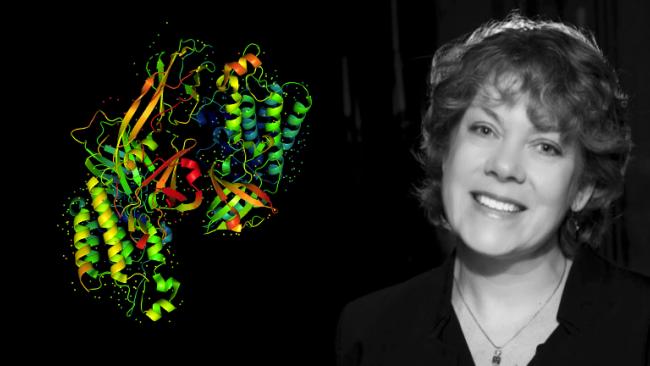
Professor Kathryn Lilley publishes review of 'GPS-like' strategies in proteomics
College Fellow, Professor Kathryn Lilley, along with 14 authors from world-leading subcellular proteomics laboratories, has published a comprehensive review covering the major techniques in the field.
‘Subcellular proteomics’ is published in Nature Reviews Methods Primers. It is co-authored by 15 researchers including Professor Kathryn Lilley, a Fellow and Director of Studies in Natural Sciences at Jesus College, and Josie Christopher, a PhD student in the Department of Biochemistry. Professor Lilley is also a Professor in the Department of Biochemistry, and the Director of the Cambridge Centre for Proteomics.
Just like us, proteins have jobs. Our jobs are various and diverse, and need to be performed in specialised places (our offices, workshops, and laboratories) with specialised people (our colleagues). Similarly, in cells, the specialised environments of organelles are where proteins work and interact with their 'molecular co-workers', such as co-factors and enzymes.
This compartmentalisation of proteins within organelles is paramount for controlling protein function and basic biological processes, including the cell cycle, proliferation, and programmed cell death. And again, like us going home to relax and cook dinner, some proteins can reside in or travel to additional organelles to fulfil multiple different roles. Identifying the subcellular/organellar locations of proteins can, therefore, help us to infer their function.
"The ability to determine the orchestrated rearrangement of a cell’s proteins supports a wide range of research, from understanding how Antarctic species are coping with rising ocean temperatures to dissecting aberrant rewiring in cancer cells."
Professor Kathryn Lilley
Professor Lilley commented: “The area of spatial proteomics – that is where proteins live in cells and how this changes from cell to cell and in response to stress and disease – is a rapidly growing field. The ability to determine the orchestrated rearrangement of a cell’s proteins supports a wide range of research, from understanding how Antarctic species are coping with rising ocean temperatures to dissecting aberrant rewiring in cancer cells.
“When I was asked to amass a series of co-authors covering all aspects of spatial proteomics, I was pretty overwhelmed. Not only did I have to choose groups developing and applying the full range of approaches to measure the spatial proteome, I also had to choose groups that I thought would work well together. In the end, although a lot of hard work, we all really enjoyed the experience and are proud of what we have achieved.”
The review on subcellular proteomics in Nature Reviews Methods Primers aims to provide an accessible resource to members of the scientific community who may be new to the field and may be considering using spatial proteomic techniques in their research. The paper gives a broad overview of methods and key papers, and directly compares them. It highlights considerations, limitations, and real-life applications to create a good knowledge base for the reader taking their first steps into this field. With subcellular proteomics still rapidly expanding, the paper briefly speculates on where the field is heading and what to look forward to in the coming years.
Josie Christopher said: "Co-authoring this review with world-leading groups in subcellular proteomics has been a welcome distraction from COVID-19 and an excellent way to connect globally despite the lack of in-person meetings. With expertise ranging from Sweden to Canada to Germany to the USA, this collaboration packages a broad, and sometimes daunting, topic into a novice-friendly resource with the hope to encourage more researchers to add these methods to their repertoire."
This article was originally published by the University of Cambridge. It is reproduced under a Creative Commons Attribution 4.0 International License





